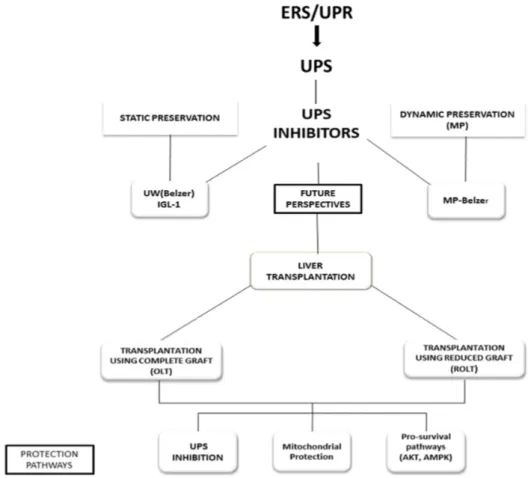Relevance of Endoplasmic Reticulum Stress Cell Signaling in Liver Cold Ischemia Reperfusion Injury
Texte intégral
Figure


Documents relatifs
Puisqu’une application orientée objet est constituée d’un ensemble d’objets et une application orientée service est constitué d’un ensemble de services de granularité plus
Most of the evidence available supports a concept where ER stress signaling is involved in the adaptation and survival of cancer cells to stress conditions [6];
Abbreviations: I/R, ischemia/reperfusion; ER, endoplasmic reticulum; ROS, reactive oxygen species; UPR, unfolded protein response; IRE1, inositol-requiring enzyme 1; PERK, PKR-like
17 The direct involvement of the UPR sensors in other mechanisms associated with cancer resistance to chemotherapy (i.e. reduction of anticancer drug accumulation, Figure 3. The
Endoplasmic reticulum stress-induced apoptosis: multiple pathways and activation of p53-up-regulated modulator of apoptosis (PUMA) and NOXA by p53. PERK promotes cancer cell
This study demonstrates for the first time that TQ protects rat liver from injury caused by hepatectomy under I/R and promoted hepatic regeneration through the induction of
While transient repression of the hepatic molecular identity is an intrinsic part of liver repair, sustained disequilibrium between the ERS and LIVER-ID programs
When treated with Tg to induce ER stress, however, the ex- pression of IRE1β in HEK293 doxIRE1β cells dose-dependently attenuated the further splicing of XBP1 (Fig. 2, A and B, +